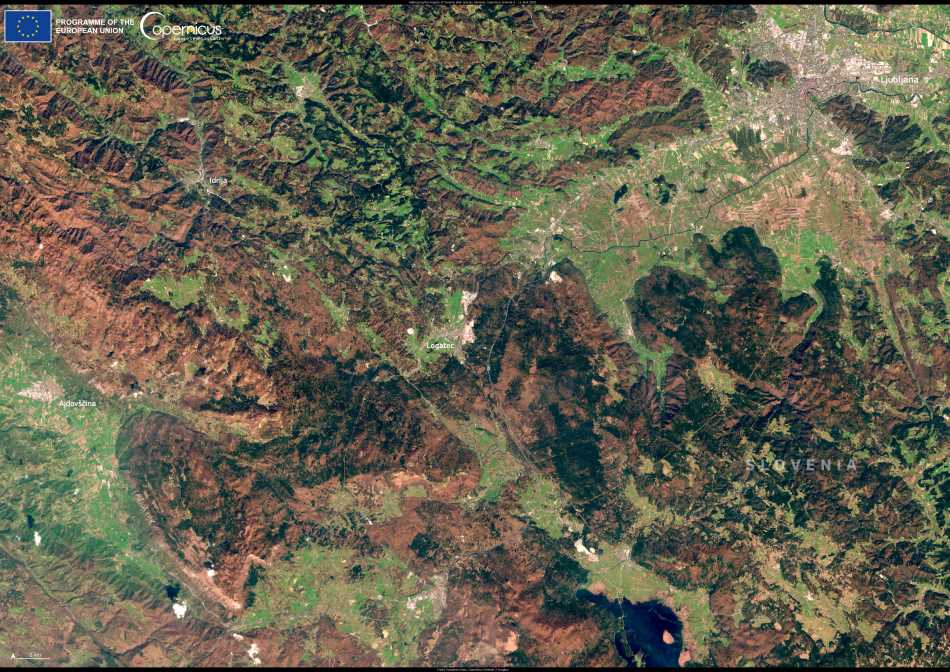In this vibrant scene captured on 11 April 2025, the Copernicus Sentinel-2 mission reveals the landscape around Logatec, Slovenia. Nestled within this region are several Natura 2000 sites — Europe’s key network for conserving biodiversity — where efforts are underway to tackle one of the most pressing ecological challenges: the spread of invasive alien plant species.
Slovenia is particularly vulnerable, with 19 terrestrial habitat types at risk, mainly meadows within agricultural areas and riparian zones along rivers and streams. These environments, vital for supporting endangered species and maintaining ecological balance, face mounting pressure from non-native plants that disrupt native biodiversity and alter ecosystems.

To confront this threat, a European Commission-funded LIFE Project has been launched, focusing specifically on the prevention and management of adverse impacts caused by ornamental invasive alien species. The project, LIFE OrnamentalIAS, applies targeted strategies including improved garden waste management practices and community outreach to minimize further spread and protect vulnerable habitats.
The area around Logatec, as seen in the Sentinel-2 imagery, exemplifies the delicate interplay between natural ecosystems and human land use. Copernicus satellite data plays an essential role in this conservation effort, providing accurate, up-to-date information on land cover, vegetation health, and habitat changes. Such data helps conservationists, land managers, and policymakers assess the effectiveness of management strategies and respond to new challenges as they arise.
With ongoing support and monitoring, initiatives like the LIFE Project aim not only to protect Slovenia’s threatened habitats but also to set an example for broader efforts across Europe to preserve ecological integrity amid the growing pressures of biological invasions.
Featured image credit: European Union, Copernicus Sentinel-2 imagery



